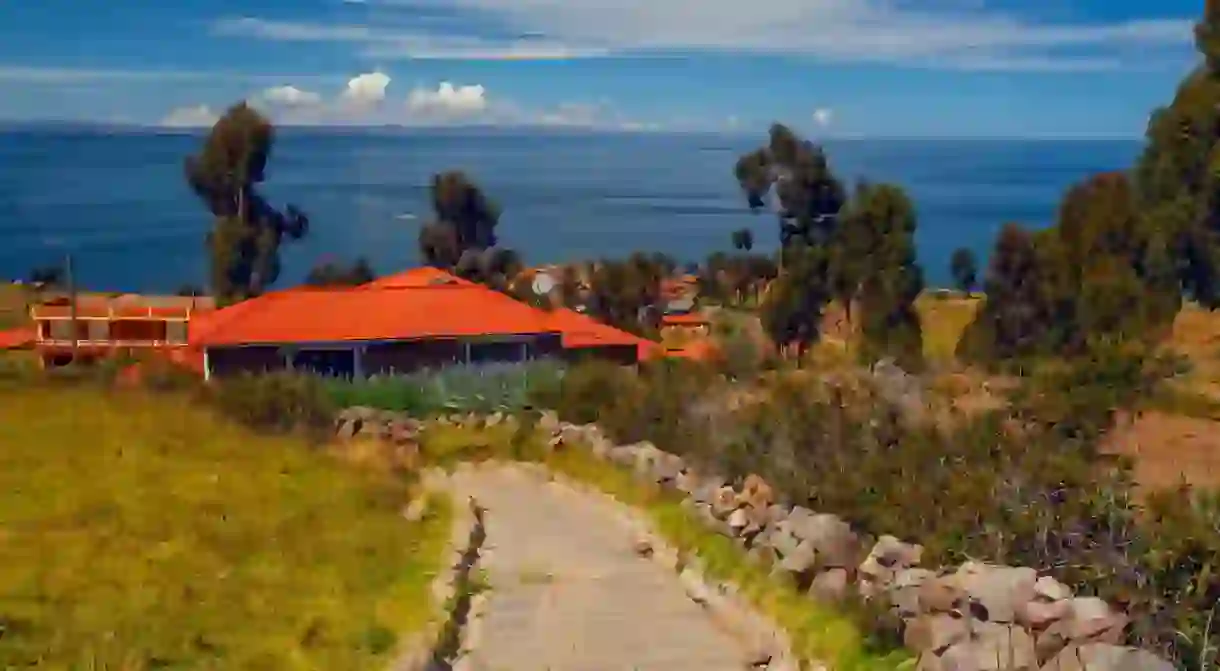The Best Things to See and Do in Puno, Peru

Lake Titicaca, with its shifting waters, its fascinating archaeological sites and utterly spellbinding indigenous culture, is simply enchanting. While the city of Puno is hard-working rather than demure and pretty, it serves as an excellent place to base yourself for trips out to discover this enchanting region of Puno, Peru. Culture Trip takes you through the best things to do and see in this hidden gem.
The Uros Islands
Was it in response to the Inca invasion or the Spanish conquest? Either way – as far as theories go – the Uros people who inhabit Lake Titicaca created their own floating reed islands by tying together the totora reeds that grow abundantly in the shallow waters of the world’s highest-altitude navigable lake. But this is not a museum – development over the years means a radio station, hospital and two schools have joined the reed-based community. Tours depart from Puno, just a 20-minute voyage away.

Amantaní Island
This barren outcrop – defined by its impressively preserved terraces – is home to people of Quechua heritage who make a living as farmers, fishermen and weavers. Visitors tend to roll up as part of a trip that also calls in at the Uros islands and Taquile island. You can lace up your boots and hike the island’s two peaks – Pachatata and Pachamama – for spectacular views across the lake and the rugged island landscape. And if you fancy it, you can even spend a night with a local family for deeper immersion into island life.

Taquile Island
Reaching this tiny protrusion in the middle of Lake Titicaca you might hear the clack of knitting needles – the villagers still earn money from the long-established textile industry. But it’s the men who make the garments as the women weave fabrics on pre-Hispanic four-stake ground looms. So special are the traditional textiles that they’re given Unesco-protected status. Expect to take lots of photos – these Quechua-speaking locals are always resplendent in traditional dress.

Sillustani
As they rise against the baking blue sky like hulking stone drums, the tower-like tombs that landmark this pre-Incan cemetery – on the shores of Lake Umayo – are a 40-minute drive beyond Puno. Known hereabouts as chullpas, the atmospheric relics command a bluff overlooking the shimmering waters. They are the interment sites of the Qulla people, who were overthrown by invading forces of the Inca Empire in the 15th century.

La Catedral de Puno
On the western side of the Plaza de Armas soars Puno’s baroque Roman Catholic cathedral – with its chunky twin bell towers and its impressive biscuit-brown facade etched in ornate sculptures. Look out for the flowers and mermaids nestled in the mix. Completed in the mid-18th century, you’d expect a rather fancy interior – in fact, the main attraction is the high marble altar under the lofty domed ceilings. Entry is free and visitors are welcome to attend the daily Mass, which is a real event.
La Casa del Corregidor
Whether you simply want to crane your neck and admire its beauty – or you just fancy a plate of tapas – this canary-yellow landmark is a must-visit. Call it Puno’s creative nerve center, if you like. The 17th-century structure is home to an art cooperative: there’s a fair-trade cafe as well as a library, while an exhibition hall displays works by local artists and hosts music events. When you’re ready for refreshments, settle in among the old-school accouterments – vinyl records hung on the walls with well-worn board games on tables – and order a pot of tea.

Museo Municipal Carlos Dreyer
Right around the corner from the Casa del Corregidor, this small museum houses an eclectic collection of art and archeological relics from the pre-Inca, Inca, Colonial and the Republic periods. It was founded by German-born painter and art-lover, Carlos Dreyer, and his collection of paintings and artifacts are here for your inspection. Climb the stairs to see a trio of mummies and a life-size chullpa – ancient burial towers you might have seen on Sillustani island.
Cerrito de Huajsapata
Balanced high on a rocky outcrop atop a hill looking over Puno city, this blinding-white statue is a striking homage to Manco Cápac – the first governor and founder of the Inca Empire, possibly in Cusco in the 13th century. Less than a 15-minute walk from the Plaza de Armas, it’s a stiff ascent, but reaching the observation deck will make the ache in your legs worthwhile as you look down over Puno and its red rooftops.
Yavarí Bed and Breakfast

At rest on Lake Titicaca, this decommissioned antique steamboat is part-tourist attraction, part-quirky bed and breakfast with bunk beds. It’s worth checking in for a night or two just to learn of its interesting history – bookable on Culture Trip. Built on the Thames in London in 1862, the gunboat was transported in sections – via Cape Horn and over the Andes by horse and llama – to Lake Titicaca to serve as the Navy’s first steel ship. There are few better places to watch the sunset as you sip pisco sours on deck.
This is an updated version of an article originally by Harry Stewart.













